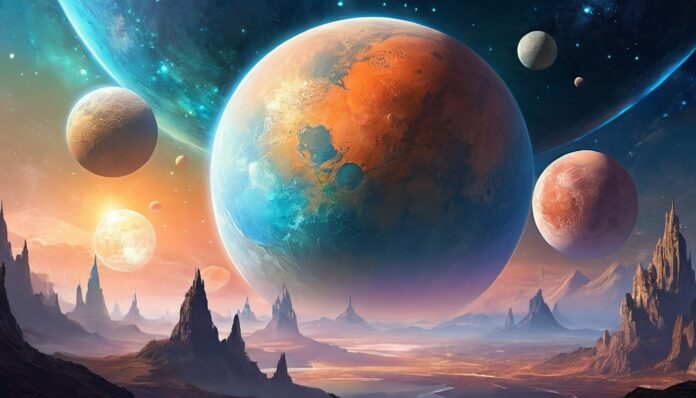A “planet moon” is a natural satellite that orbits a planet. Different planets have different numbers and types of moons. Moons come in various sizes and compositions. They can be rocky or icy, and some even have atmospheres or signs of volcanic activity.
Here are the most interesting facts about planet moons.
- Dactyl is the smallest moon in the Solar System. It is worth noting that it orbits around the asteroid Ida.
- Jupiter Has 79 known moons, including large ones like Io and Europa.
- Saturn Has 83 known moons, with Titan being the biggest.
- Mars Has two small moons, Phobos and Deimos.
- Ganymede is considered the largest moon in the Solar System. It constantly orbits Jupiter, having its own magnetic field.
- Did you know that Phobos, Mars’ moon, rises and sets twice a day?
- Mercury does not have any moons. At least, that’s what scientists suggest today.
- Venus also has no moons, except for the asteroid 2002, which is a quasi-satellite.
- Io, one of Jupiter’s 79 moons, has a large number of active volcanoes.
- It’s interesting that our planet has only one moon – the Moon.
- Triton, Neptune’s moon, is considered the only moon that moves in the opposite direction to its planet.
- Triton has many active cryovolcanoes that erupt ammonia and water.
- Haumea, a dwarf planet in the Solar System, is the fastest rotating body among all objects studied in the Solar System with a diameter exceeding 100 km. It has 2 moons – Hiʻiaka and Namaka, discovered in 2005.
- The only moon with an atmosphere discovered is Titan. Today, scientists have proven that there are entire lakes and rivers on its surface.
- Astronomers predict that Triton will be destroyed by Neptune’s gravitational influence in the future.
- Callisto, Jupiter’s moon, has the highest number of craters.
- Some scientists claim that Europa, Jupiter’s moon, not only has lakes but also large oceans. If this is indeed the case, there could be water there tens of times more than on our planet.
- It’s interesting that of all known celestial objects, Europa has the smoothest surface.
- In terms of size, the moons Ganymede and Titan exceed the dimensions of Mercury.
- The 4 largest moons – Io, Europa, Ganymede, and Callisto – are called the Galilean moons.
- Interestingly, one side of Iapetus, one of Saturn’s moons, is smooth, while the other side is covered with craters and other irregularities.
- There is a hypothesis that Saturn’s moon Rhea may have its own rings.
- Saturn’s icy moon Enceladus reflects sunlight more than any other celestial body in the Solar System – almost 100%.
